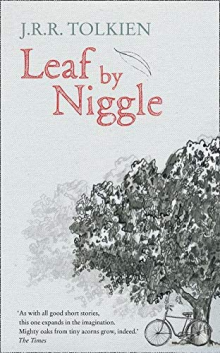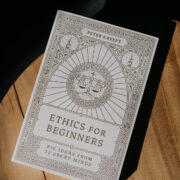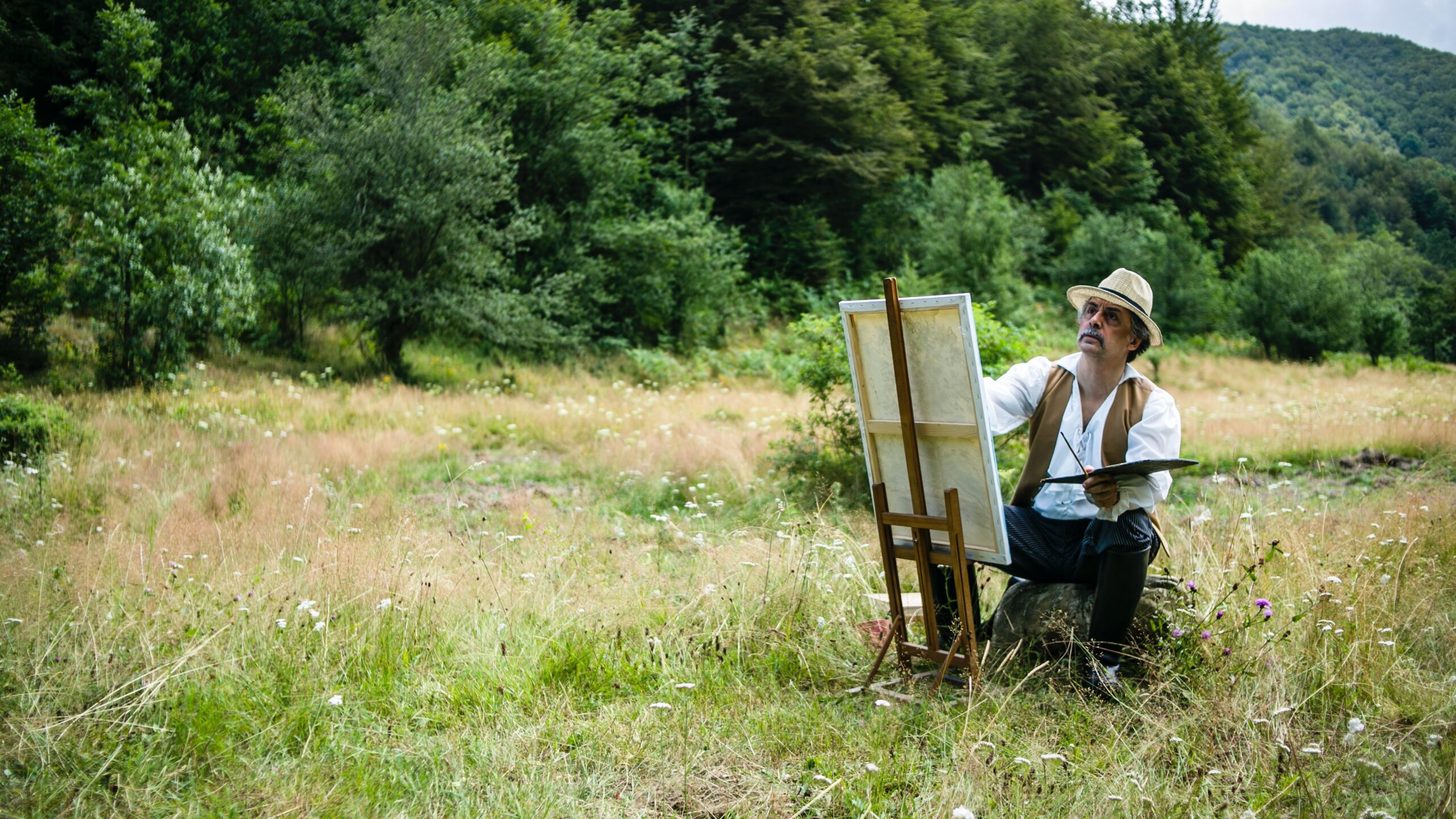The name of J.R.R. Tolkien is synonymous around the globe with humble Hobbits and the great saga The Lord of the Rings. Less well known, even among Tolkien’s devoted admirers, is his marvelous short story “Leaf by Niggle.” Completely unconnected to his larger Middle-earth legendarium, “Leaf by Niggle” is nevertheless a beautiful and achingly moving meditation on life, death, and the transcendent meaning of artistic expression—sub-creation, as Tolkien would call it. It is also probably the closest thing in Tolkien’s corpus to an autobiographical allegory.

Niggle is a painter who lives in the countryside. He is a rather fussy and impatient little man (after all, the word “niggle” means “a trifling complaint”). Yet for all that, he is modest and kind-hearted. When he isn’t distracted by the frequent “interruptions” of his bothersome neighbor Mr. Parish or surprised by visits from the Inspector of Houses, Niggle spends all his free time working meticulously on a life-sized painting of a majestic tree. But he rarely makes much progress. You see, Niggle is something of a perfectionist. He’s fascinated by minute details and often becomes absorbed in painting each individual leaf as a unique work of art all its own.
One rainy and blustery day, Mr. Parish intrudes on Niggle yet again. Parish’s wife has taken sick, and Niggle must cycle into town to call for the doctor. Out in the cold and the wet, Niggle himself catches ill. Now bedridden and miserable, he frets that he’ll never finish his great painting before he has to embark on a mysterious and unavoidable “journey”—clearly a metaphor for mortality.
Indeed, Niggle’s time has run out. Tolkien’s narrative then takes on a surreal, dreamlike quality. Niggle finds himself sent against his will to a “workhouse infirmary,” an otherworldly, almost purgatorial environment. He spends countless hours in quiet reflection and in arduous physical labor. From this monastery-like rhythm of ora et labora (“prayer and work”), Niggle learns to embrace a spirit of obedience and humility.
When believers develop their talents in cooperation with the Church, they assist in building up the Kingdom of God.
Suddenly, Niggle finds himself before a mysterious board of inquiry. His entire life in all its brokenness and beauty is evaluated by a pair of disembodied Voices, one stern but just, the other compassionate and merciful. Judged ready for “the next stage,” Niggle is released from confinement and sent to a pleasant green country where he encounters the Tree—the Tree from his painting has been miraculously brought to life in all its glory! He is also reunited with Mr. Parish. The two men marvel at the mysterious way in which the Tree was enriched by both their efforts: “Some of the most beautiful [leaves]—and the most characteristic, the most perfect examples of the Niggle style—were seen to have been produced in collaboration with Mr. Parish: there was no other way of putting it.”
After spending some time with Parish beautifying the landscape around the Great Tree, Niggle discerns that he’s ready to move on. In the company of a helpful Shepherd, he begins to trek towards the Mountains, the presence of which was only hinted at in the background of his painting. Mountains are an unmistakable biblical image for man ascending to communion with the Divine.
“Leaf by Niggle” was first published in 1945, and it remains one of Tolkien’s most poignant and powerful works. Anyone with an artistic bent can find a bit of themselves in the tale of little Niggle. In fact, many themes present in “Leaf by Niggle” of the transcendent dimension and purpose of art resonate beautifully with a document written over fifty years later: Pope St. John Paul II’s remarkable “Letter to Artists.”
John Paul II reminds his reader that “the distinction between the moral and artistic aspects [of human activity] is fundamental, but no less important is the connection between them. Each conditions the other in a profound way.” Since “beauty is the visible form of the good, just as the good is the metaphysical condition of beauty,” it’s only when the moral and the artistic are integrated that human creative talents can truly flourish and find fulfillment.
Tolkien’s characters of Parish and Niggle seem to represent the moral and the artistic aspects of human life unmoored from one another. Parish has a strong sense of propriety but appears to have no aesthetic sensibility or appreciation for artistic beauty. He focuses totally on his own parochial concerns. Niggle acts just as self-centeredly as Parish. He devotes his attention entirely to his art. He often neglects his responsibilities to his neighbors or only grudgingly lends a hand.

Artists, writers, and other creatives have a special responsibility to use their work not for selfish or self-seeking purposes but as a way of glorifying God in their life. John Paul II observes that “Artists, the more conscious they are of their ‘gift’ are led all the more to see themselves and the whole of creation with eyes able to communicate and give thanks, and to raise to God a hymn of praise. This is the only way for them to come to a full understanding of themselves, their vocation, and their mission.” Further, he declares, “All men and women are entrusted with the task of crafting their own life: in a certain sense, they are to make of it a work of art, a masterpiece.”
It is of enormous significance that Niggle’s art only finds its full expression and transcendent purpose when he lives in communion with Parish—an obvious allusion to the Church. When believers develop their talents in cooperation with the Church, they assist in building up the Kingdom of God. All art, in so much as it expresses truth, beauty, and goodness, seems, in some mysterious way, to participate in the Christian mystery. As John Paul II puts it, “Every genuine [artistic] inspiration . . . contains some tremor of that ‘breath’ with which the Creator Spirit suffused the work of creation from the very beginning.”
“Leaf by Niggle” teaches us that when we anchor our dreams, desires, and talents in eternity by the chain of the three transcendentals—goodness, truth, and beauty—that God, in his loving providence, will redeem and transform them in ways we cannot possibly imagine this side of the eschaton. In the consoling words of St. Paul, “No eye has seen, nor ear heard, nor the human heart conceived, what God has prepared for those who love him” (1 Cor. 2:9).
It’s likely that I would not be the man I am today if I hadn’t encountered a paperback copy of The Fellowship of the Ring when I was thirteen. Ever since then, I’ve continued to derive inspiration and comfort from the staggering beauty of J.R.R. Tolkien’s wonderful tales. In a special way, “Leaf by Niggle” has made a profound mark on me as a writer and artist. And I hope that someday, if like Niggle I press onward towards the distant Mountains, I’ll have the chance to thank the Divine Author, the source of all human creativity, for the transformative impact that Tolkien’s stories made in my life and in the lives of so many others around the world.
